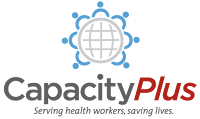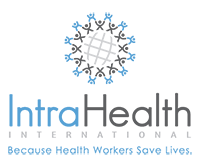Browse by Resource Type
Human Capital and the HIV Epidemic in Sub-Saharan Africa
The overall objective of this paper is to provide some insights into the effects of the HIV epidemic on human capital in sub-Saharan Africa through a discussion of some of the factors that are operating. It is not intended as a compendium of data on the problem but aims instead to provide an analytical framework for understanding the policy and programming issues. There is an analysis of the impact on the public services in Malawi, a detailed presentation of the impact on education and health and a discussion of issues relating to the measurement of the impact on different productive sectors and the role of different social partners in adjusting to, and managing, the impact.
- 2290 reads
How Can Self-Assessment Improve the Quality of Healthcare
This paper examines the issues relating to self-assessment, such as the different types of self-assessment, its uses, and its validity. It also reviews the literature (largely from developed countries) that informs our knowledge of self-assessment. The paper makes recommendations for future research and concludes that while much remains to be done to assure that self-assessment has the impact it promises, it may also be less costly and easier to implement than alternatives. [from author]
- 2065 reads
Qualitative Study of Iranian Nurses' Understanding and Experiences of Professional Power
Nurses are expected to empower their clients, but they cannot do so if they themselves feel powerless. They must become empowered before they can empower others. This paper is an attempt to clarify the concept of power in nursing. It also presents a model describing the factors affecting nurse empowerment. [from abstract]
- 4220 reads
Community-Based Distribution in Tanzania: Costs and Impacts of Alternative Strategies to Improve Worker Performance
Donor funds may be inadequate to support the growing demand for services provided by community-based distribution (CBD) programs. One solution may be to reduce the remuneration of CBD agents, but this approach may lower their productivity. Programs also need to consider reducing other costs, including those for supervision and training. The cost per agent visit—including costs associated with payments to agents and to supervisors and the costs of training—was calculated for three CBD programs in Tanzania. The output measure was visits in which contraceptives were provided or referrals made for family planning services.
- 3908 reads
Tackling Nurse Shortages in OECD Countries
This paper analyzes shortages of nurses in OECD countries. It defines and describes evidence on current nurse shortages, and analyzes international variability in nurse employment.
- 1976 reads
Human Resources Development as Part of the Response to the Changing Paradigm of International Health Functions: the Case of Thailand
This paper analyses in detail the changing international health paradigms and the situations that challenge international mechanisms existing globally and in Thailand. Human resources development on international health and negotiation skills constitute the core responses. The initial success of the recent development in Thailand is also reviewed. Finally, the conceptual framework, possible strategies and priority activities are proposed to be carried out for future international health development. [from abstract]
- 2354 reads
Developing Evidence-Based Ethical Policies on the Migration of Health Workers: Conceptual and Practical Challenges
The aim of this paper is to examine some key issues related to the international migration of health workers in order to better understand its impact and to find entry points to developing policy options with which migration can be managed. [from abstract]
- 2622 reads
Provider Payments and Patient Charges as Policy Tools for Cost-Containment: How Successful are They in High-income Countries?
In this paper, we focus on those policy instruments with monetary incentives that are used to contain public health expenditure in high-income countries.
- 2060 reads
Human Resources: Managing and Developing Your Most Important Asset
This issue discusses human resource development, its components, and its critical role in improving organizational performance. The accompanying supplement, the Human Resource Development Assessment Tool, is designed to help a public or private-sector organization identify problem areas in the organization’s HRD system and develop an action plan to address them. [editors’ description]
- 3490 reads
Implementing IMCI in a Developing Country: Estimating the Need for Additional Health Workers in Bangladesh
This study estimates the personnel cost implications of implementing the newly proposed Integrated Management of Childhood Illness (IMCI) algorithm in the first level health care facilities in rural Bangladesh. Policy makers need to know the additional resource requirements for IMCI before its actual implementation so that appropriate levels and combinations of personnel and drugs can be allocated. [abstract]
- 2645 reads
Impact of HIV/AIDS on the Health Sector in Sub-Saharan Africa: The Issue of Human Resources
This paper reviews data, studies, and other information on HIV/AIDS impacts on human resources in sub-Saharan Africa. The purpose is to guide the development of an instrument to conduct HIV/AIDS human resource assessments in the health sector. Until now, inadequate attention has been devoted to this critical step in responding to the epidemic. Such assessments can assist policy makers and advocacy groups to shape and accelerate the implementation of national HIV/AIDS policies and programs throughout the continent. [Description from author]
- 2381 reads
Attitudes of Nursing Students of Kolkata Toward Caring for HIV/AIDS Patients
This study examines the attitudes of nursing students toward caring for HIV/AIDS patients and their knowledge and perceptions about the disease. Findings revealed a very positive outlook of the nursing students in regards to caring for HIV/AIDS patients. Although most of them expressed their willingness to take any job offer concerning caring for HIV/AIDS patients, 34.3% apprehended resistance from their family members in this regard. However, they also considered that it would be possible for them to overcome the resistance. Although 100% of the students had heard of HIV/AIDS, a number of them had misconceptions about various aspects of the disease.
- 7325 reads
Role of Traditional Birth Attendants in Preventing Perinatal Transmission of HIV
Every year a million women infected with HIV deliver babies without professional help. This article suggests that traditional birth attendants could be involved in preventing perinatal transmission of HIV by offering services such as HIV testing and counseling and short courses of antiretroviral drugs. [publisher’s description]
- 3010 reads
Intervention Complexity: A Conceptual Framework to Inform Priority-Setting in Health
This article proposes a conceptual framework for the analysis of human resources for health interventions according to their degree of technical complexity; this complements the notion of institutional capacity in considering the feasibility of implementing an intervention.
- 2801 reads
Vertical-Horizontal Synergy of the Health Workforce
An editorial by Gijs Elzinga in an issue of the Bulletin of the World Health Organization dedicated to the theme of Human Resources for Health. Elzinga discusses the importance of effective interplay between the goals of vertical programs and the horizontal health care system within which vertical programs are implemented.
- 3113 reads
Health Care on the Frontlines: Survey Evidence on Public and Private Providers in Uganda
The report presents findings from a baseline survey of 155 primary health care facilities (dispensaries, with and without maternity units) that was carried out in Uganda in the latter part of 2000. The analysis compares service delivery performance in three ownership categories: government, private for-profit, and private nonprofit. Among the topics it explores at the facility level are staffing, availability of drugs and other inputs, remuneration, outputs, and financing. The findings are highly relevant for public policy in Uganda and in other countries in Africa that are undertaking civil service reform and promoting private-public partnerships in health care.
- 2928 reads
Responding to HIV/AIDS in Africa: A Comparative Analysis of Responses to the Abuja Declaration in Kenya, Malawi, Nigeria and Zimbabwe
The challenge of tackling HIV/AIDS was taken up by African Heads of State at their summit in Abuja in 2001. This led to the Abuja Declaration, the primary goal of which is to reverse the accelerating rate of HIV infection, TB and other related infectious diseases.
This report is based on research carried out by ActionAid International in Kenya, Malawi, Nigeria and Zimbabwe and provides a comparative analysis of the achievements and challenges faced by these four African countries in relation to the Declaration. [Adapted from author]
- 2399 reads
Polio Eradication: Mobilizing and Managing Human Resources
This paper reviews the strategies for polio eradication, summarizes the skills and number of people required for their implementation, outlines the approach used to mobilize and manage these human resources, and discusses the impact of this approach. [from introduction]
- 2052 reads
Working Together For Health: World Health Report 2006
This report contains an expert assessment of the current crisis in the global health workforce and ambitious proposals to tackle it over the next ten years, starting immediately. The report reveals an estimated shortage of almost 4.3 million doctors, midwives, nurses and support workers worldwide. The shortage is most severe in the poorest countries, especially in sub-Saharan Africa, where health workers are most needed. Focusing on all stages of the health workers’ career lifespan from entry to health training, to job recruitment through to retirement, the report lays out a ten-year action plan in which countries can build their health workforces, with the support of global partners. [from publisher]
- 7452 reads
Zambia HIV/AIDS Workforce Study: Preparing for Scale-up
This report presents the findings of a study conducted at 16 healthcare sites in Zambia offering voluntary counseling and testing (VCT), prevention of mother-to-child transmission of HIV (P-MTCT), and antiretroviral (ARV) therapy. The study period, including design, implementation, and data analysis, was April to June 2003. The purpose of the study was to assist the Government of Zambia in determining whether it will have sufficient staff to be able to scale up VCT, P-MTCT, and ARV treatment to reach its targeted numbers of clients.
- 2588 reads
Ethical Issues in Health Workforce Development
Increasing the numbers of health workers and improving their skills requires that countries confront a number of ethical dilemmas. The ethical considerations in answering five important questions on enabling health workers to deal appropriately with the circumstances in which they must work are described.
- 8557 reads
HIV/AIDS and Human Resources
We are beginning to recognize that, parallel to biological action, the HIV/AIDS pandemic also attacks the human capacity and social defence systems. By destroying the fabric of health systems, the spread and impact of the epidemic is hugely augmented. [author’s description]
- 2106 reads
Better Health Outcomes from Limited Resources: Focusing on Priority Services in Malawi
The present report deals with health financing issues in Malawi and analyzes trends in health expenditures in the 1990s, along with the prospects for improving resource mobilization, allocation and use in the health sector of that country. This review highlights the need to further prioritize the activities under the Malawi National Health Plan so that the plan will be a basis for government policy and budgetary commitments and also an instrument to marshal and orchestrate donor support to the sector. [from foreword]
- 7963 reads
Human Resources for the Control of Road Traffic Injury
The definition of the ideal numbers and distribution of human resources required for control of road traffic injury (RTI) is not as advanced as for other health problems. We can nonetheless identify functions that need to be addressed across the spectrum of injury control. [from abstract]
- 1437 reads
Uganda Leads the Way in Innovative HIV/AIDS Treatment
This news article introduces an approach to HIV/AIDS treatment that has helped Uganda scale up treatment in the midst of limited health workers. The approach, called Integrated Management of Adult and Adolescent Illness (IMAI), has been inspired by successes in Latin America, the former Soviet Union and Africa, where lay health workers who are often relatives, friends or other community volunteers have been trained to help treat tuberculosis patients in poor settings. [adapted from author]
- 1715 reads
Mauritania Health System and Implementation of the Poverty Reduction Strategy: Medium-Term Expenditure Framework (2002-04) for Improving the Efficiency and Equity of Public Health Expenditure
Provides an overview of a new budgeting approach in Mauritania, developed by the Ministry of Health on the basis of an analysis of the health problems of poor people, their difficulties in accessing health care, and the shortcomings of the health systems in serving them. The document shows how such analysis can inform the budgeting process and reorient public expenditures in the health sector. Budgeting health services in Mauritania have shifted from a line item approach towards performance based programs with specific indicators of success identified both program and region wide. [from author
- 8867 reads
Role of Wages in the Migration of Health Care Professionals from Developing Countries.
Several countries are increasingly relying on immigration as a means of coping with domestic shortages of health care professionals. This trend has led to concerns that in many of the source countries—especially within Africa—the outflow of health care professionals is adversely affecting the health care system. This paper examines the role of wages in the migration decision and discusses the likely effect of wage increases in source countries in slowing migration flows. [from abstract]
- 2764 reads
Private Sector, Human Resources and Health Franchising in Africa
In much of the developing world, private health care providers and pharmacies are the most important sources of medicine and medical care and yet these providers are frequently not considered in planning for public health. This paper presents the available evidence, by socioeconomic status, on which strata of society benefit from publicly provided care and which strata use private health care. [from abstract]
- 1938 reads
Human Resources in the Health Sector: An International Perspective
This paper, aimed primarily at DFID advisers and health sector analysts, will attempt to map out selected issues relating to the planning and management of human resources by combining an international perspective with issues and trends emerging from individual countries. HR issues and challenges have been grouped into four broad objectives that poor countries, donors and advisers will need to address simultaneously over the next decade and beyond.
- 3053 reads
Tackling International Health Worker Recruitment
Billions of dollars have been invested in efforts to prevent the spread of HIV and other diseases in the world’s poorest countries. Yet at the same time, qualified health workers are leaving the same areas to work in the world’s richest countries. This article provides a brief overview of this issue. [author’s description]
- 1654 reads




